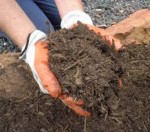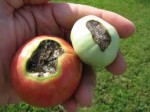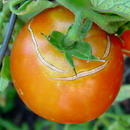by Donna Hagar, Somervell County Master Gardener
Ahh, wasn’t all the rain we got in May just wonderful? Everything greened up and flourished. You could tell the trees, grass and shrubs were heaving a huge sigh of relief! This is a great time to want to sit back and really enjoy our lush and thriving landscapes. But what if that was it? What if the rains will be fewer and farther between? What can we do to keep our trees, plants, gardens and lawns happy?
 For starters, MULCH! This is something we Master Gardeners push very hard, as it makes such a difference in retaining moisture and keeping weeds at bay. And I’m not talking a scattering or just top dressing of mulch. More like 3-4 inches thick. Just make sure the soil underneath is good and moist before you load that much on top. If you have drip irrigation or soaker hoses, place these under the mulch, as it takes quite a bit of water to get thru that thick layer of mulch. When you do water, you want to make sure you are actually watering the soil so plants can get their much needed drink.
For starters, MULCH! This is something we Master Gardeners push very hard, as it makes such a difference in retaining moisture and keeping weeds at bay. And I’m not talking a scattering or just top dressing of mulch. More like 3-4 inches thick. Just make sure the soil underneath is good and moist before you load that much on top. If you have drip irrigation or soaker hoses, place these under the mulch, as it takes quite a bit of water to get thru that thick layer of mulch. When you do water, you want to make sure you are actually watering the soil so plants can get their much needed drink.
Be sure to stay on top of weeds. We don’t want our precious plants competing with weeds for water and nutrients. That thick layer of mulch will certainly help keep weeds at bay as well. And weeds that do come up in heavily mulched beds generally have germinated in the mulch itself and will pull up very easily.
In the vegetable garden, as crops are harvested and completed bearing, be sure to keep weeds in check in areas that have been vacated. Add organic matter and keep the area mulched to be ready for fall crops that will begin going in next month.
Oh and by the way, if you have tomatoes or squash with blossom end rot on the bottom or are cracked and split toward the top, this can easily be attributed to the fluctuations in moisture.
Blossom-end rot (BER) is generally caused by a lack of calcium being taken up in the plant. Soil moisture fluctuations we have had lately can reduce the uptake of calcium in the plant and can lead to BER.
The cracking is caused when the tomatoes get too much water too fast and the skin can’t stretch enough to accommodate. These are still edible by cutting off affected areas. Keep the soil consistently moist (ah, that ever important mulch can help) and both conditions can be kept under control for future harvests.

